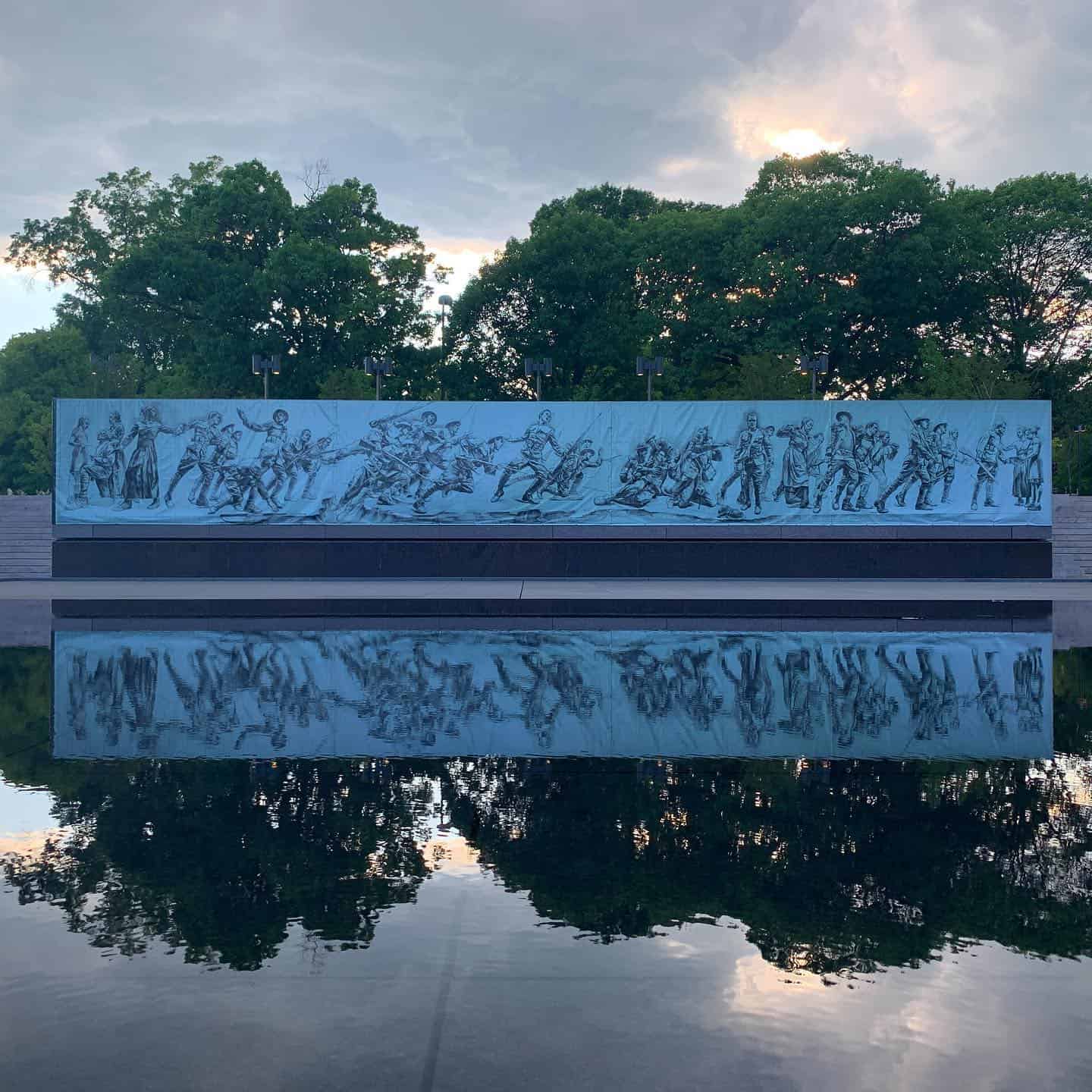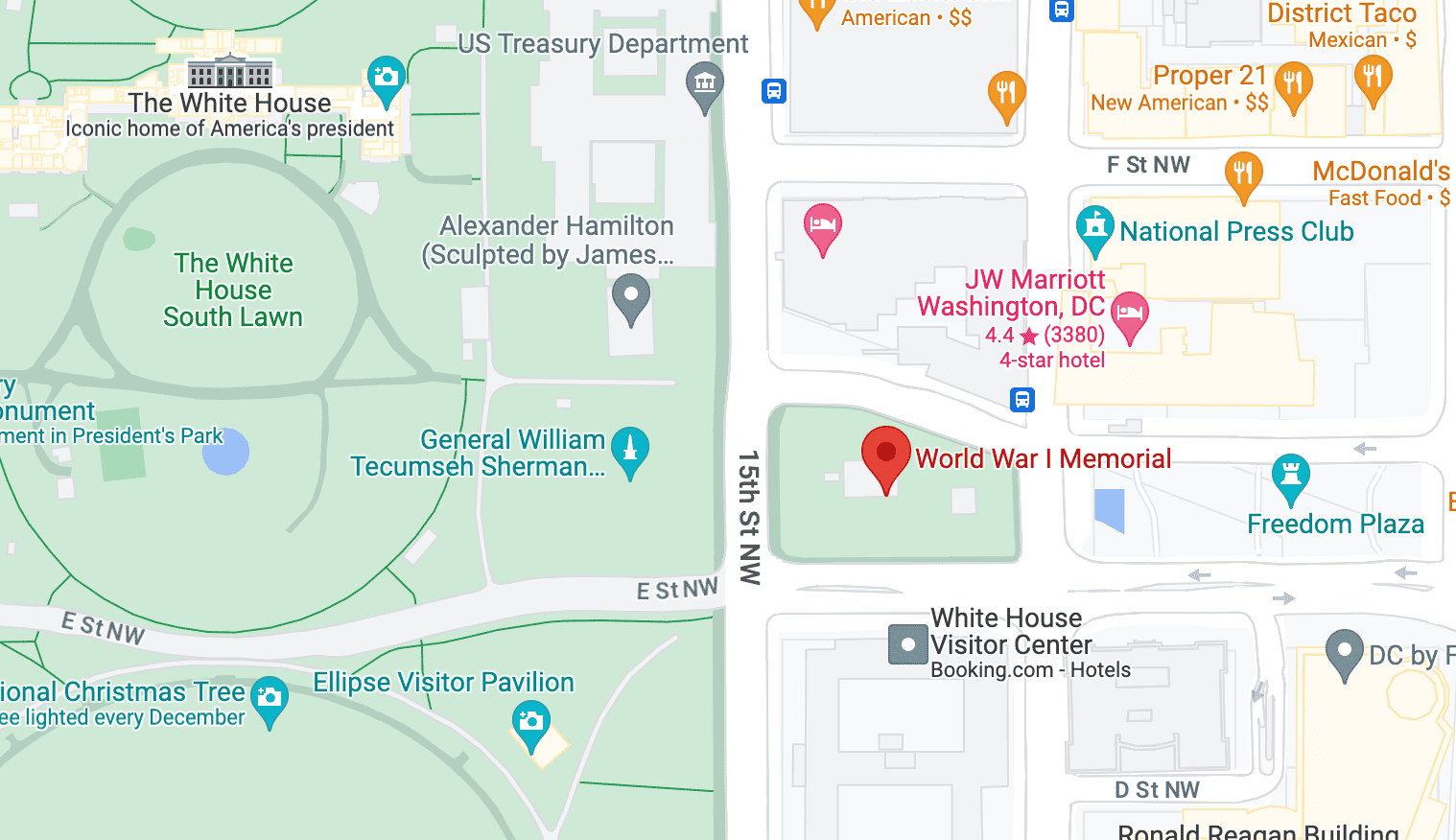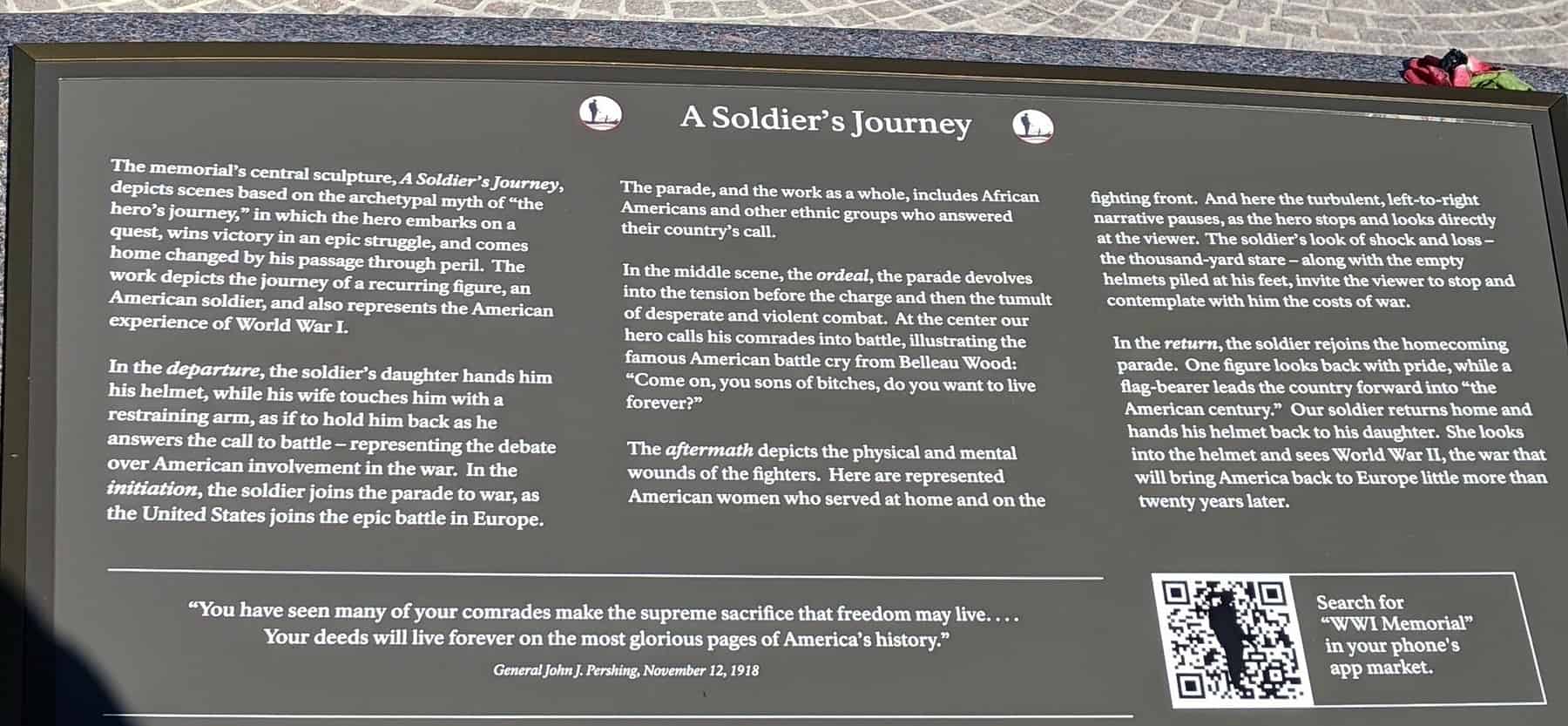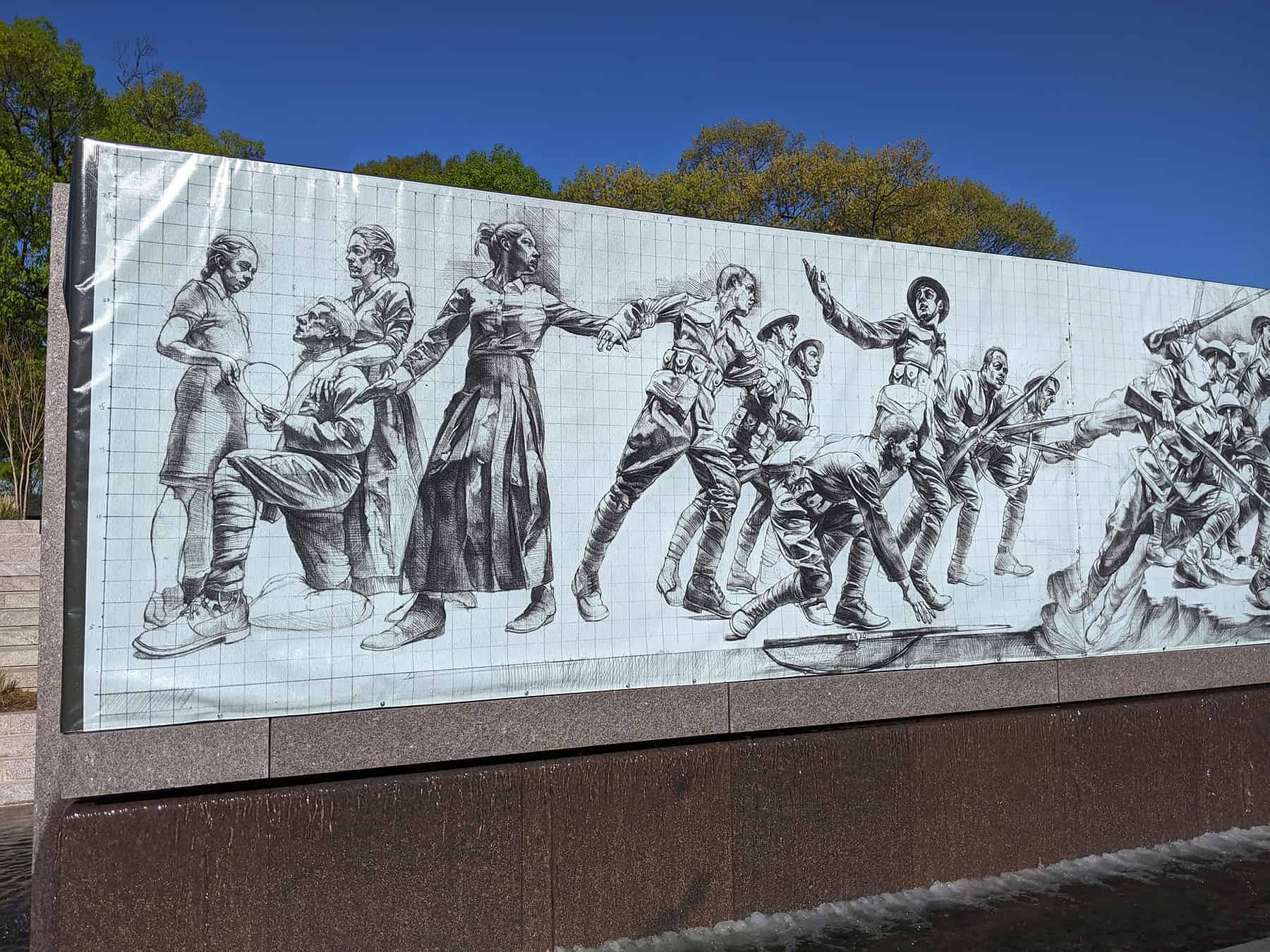Built to honor the 4.7 million Americans who served in the First World War, including the 116,516 who made the ultimate sacrifice, this memorial was formally unveiled on April 16, 2021.
This new memorial incorporates the existing memorial to Gen. John J. Pershing, who was the commander of the American Expeditionary Forces during that war.
The memorial is located across from the White House, on Pennsylvania Ave., between 14th St. NW and 15th St. NW.
Designed by Joseph Weishaar and built by the United States World War I Centennial Commission, the central feature, sculpted by Sabin Howard is a bas-relief called “A Soldier’s Journey.”
Plan Your Visit:
The memorial is accessible 24 hours a day. The site does not have a gift shop or restrooms.
The nearest restrooms are inside the White House Visitor’s Center across the street.
Tip: Every day at 5pm, a bugler in period dress sounds “Taps” to honor the memory of the 4.7 million AMericans who served in World War I.

How to get there:
Being right across the street from the White House’s South Lawn, and close to the White House Visitor’s Center, this memorial is in the heart of Washington D.C.

Public transit:
It’s a short walk from metro stations at Metro Center and Federal Triangle (Blue, Orange, and Silver Lines.)
There are also bus stops for the 230, 250, 32, 33, 35, and DC3 buses right by the park.
Parking:
Though walking or public transit are the recommended ways to get to the World War I memorial, there is a parking garage under the nearby Ronald Reagan Building.

Symbolism:
The thirty eight figures on the bas-relief are meant to show the experiences of the American soldier. It begins with the soldier taking leave from his wife and daughter.
We then follow him through combat, seeing people around him killed, wounded, and gassed. Recovering from the shock, the soldier returns home to his family.
The conflict about joining the conflict is shown in the body language of the soldier's family. The child hands him his helmet, while the wife holds him, not wanting him to go.
When he joins the parade to war, we see many different men, including African Americans, who took up the call.
In the aftermath of the scenes of war, we see the human toll on those who survived, including the so-called “thousand yard stare,” as well as the empty helmets that remind us of those who did not return.

Note: Due to pandemic delays, the bas-relief is not installed as of Spring 2023. There is currently a photographic rendering of the relief’s image.
Another part of the memorial is the Belvedere. This architectural feature includes a large rendering of the World War I Victory Medal, as well as a list of campaigns in which the American Expeditionary Forces took part.






